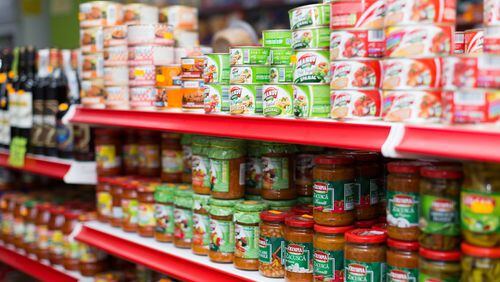I still have vivid memories of helping friends who experienced heartbreaking floods in our community several years ago. One especially exhausting day of trying to salvage what we could from water-soaked lives was interrupted with the precious sight of Red Cross volunteers driving through the neighborhood offering sandwiches and beverages. It was a meal I will never forget.
We never know when we’ll be faced with unexpected disasters. But one thing remains constant — our need for daily food and water. According to the Federal Emergency Management Agency (FEMA) and the American Red Cross, our homes need a two-week store of non-perishable food and clean water for unplanned emergencies. Here’s a basic list:
Water! While we can usually subsist on half our usual food intake, we can’t scrimp on water. Most humans require at least 2 quarts of fluids a day just to function normally. FEMA recommends we store at least one gallon of water per person per day for cooking and other needs. A family of four, for example, would require 56 gallons for a two-week emergency. Commercially bottled water is the safest way to store your stash of this essential fluid.
Non-perishable foods that require no special preparation, refrigeration or cooking can be lifesavers during a crises, say experts. But even foods that tend not to spoil need to be kept dry and stored properly. (Think sealed, waterproof containers and cans.) Rotate foods in and out of your emergency stash before they reach their “Use by” date.
If stored in a cool, dark and dry area, these foods will keep for up to 6 months: dry milk, dried fruit, crackers, potatoes.
Use these foods within a year or by the expiration date on the package: canned meat, stews and soups, canned fruits, juices and vegetables, ready to eat cereal, peanut butter, jelly, honey, hard candy, canned nuts, vitamins.
Some foods can be properly stored for a year or more. They include canned vegetables and beans, dry pasta, white rice, bouillon, instant coffee, tea and cocoa.
In a disaster — especially when the electricity is out — eat up your food supply in order, advises FEMA. Start with any perishable food you have on hand including refrigerated foods and fresh produce. Use foods from your freezer next. When the power goes off, frozen foods will last up to two days or as long as they still contain ice crystals in their centers.
Resort to your non-perishable items last. Canned foods can be safely eaten out of the can if need be, says FEMA. Remember to pack a can opener and disposable utensils in your emergency stash.
Finally, make sure you have familiar foods on hand for unexpected disasters. They truly can provide well-needed comfort during times when all else is torn away. God bless the Red Cross, Salvation Army and other volunteers who nourish us through difficult times.
———
(Barbara Quinn is a registered dietitian and certified diabetes educator affiliated with Community Hospital of the Monterey Peninsula. She is the author of "Quinn-Essential Nutrition" (Westbow Press, 2015). Email her at to barbara@quinnessentialnutrition.com.)


/cloudfront-us-east-1.images.arcpublishing.com/ajc/P7DYBH6TO7FEKG4SUXQQKADRXE.jpg)



